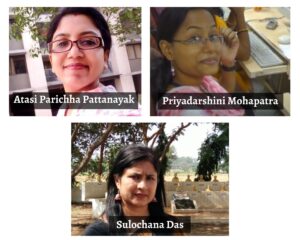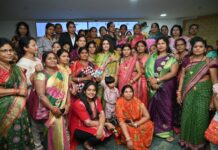Dr. Fakira Mohan Nahak
The television news industry in Odisha has gone through a progressive journey in the past two decades. In this series Dr. Fakira Mohan Nahak presents the trend of WOMEN IN oDISHA tELEVISION jOURNALISM STARTED WITH etv.
Television in Odisha is only 45 years old. Out of that, the domestic private satellite television channels have been enjoying the love of the audience for the last 20 years. In fact, the growth of television media as an industry in India gained momentum from the beginning of the new millennium. The popularity of television and the related businesses have been so successful in the last two decades that it attracted many entrepreneurs and industrialists to venture into this space. Had it not been for this, in twenty years the number of television channels in the country would not have increased from 25 to 900 plus. The growth of television in Odisha is not far behind the national trend. While Doordarshan (DD-Oriya) was the only channel in Odisha in the 90’s, at present there are more than twenty channels since the launch of ETV Oriya in 2002. This is definitely a huge leap forward in television broadcasting.

With the presence of multiple television channels, Odisha witnessed a massive progress in terms of women’s participation in mainstream media and journalism over the last two decades. The state was bit conservative as far as choosing the field of endeavor for women was concerned. In the last century, girls were mostly interested in teaching, medical and nursing or administrative services. Women pursuing higher studies in Journalism were not considered a smarter choice. With the exception of a handful of people, the girls were not interested in the mainstream media at that time. Most of those who were studying journalism at Berhampur University were interested in working as public relations officers in various private or government agencies.

ETV Oriya pioneered in bringing the women talents to the forefront. At the time of its launch, there were many women post graduates from the Department of Journalism and Mass Communication, Berhampur University in the team. Atasi Parichha Pattanayak, Kalpana Karan, Rajashree Mohapatra, Manorama Sadangi, Mrunalini Sahu, Shivani Sarkar and Bandita Panda (at present she is Dr. Bandita Panda, HoD, Department of Journalism and Mass Communication, Berhampur University), Pallavini Mishra (now a well-known face of Telugu cinema) and Smruti Shikha Pradhan, all from the same department were part of the team. Rupali Kar and Sharmistha Patnaik from the Indian Institute of Mass Communication (IIMC), Dhenkanal and Rosie Mishra and Smriti Mishra were also part of the team. Most importantly, Sulochana Das (currently a senior member of the BJD and chairs the Office of the State Commissioner for Persons with Disabilities) was the head of the state-level news bureau of ETV Oriya.

Most of them were employed at Ramoji Film City, Hyderabad, at the ETV headquarters. They hardly bothered about the challenges being faced as women in the initial days to stay away from home and work in another state. Their dedicated and continuous efforts helped to build their competencies and establish each one as a strong media professional. In the two years since the launch of ETV Oriya, other girls started joining in the channel phase wise. Itishree Nayak, Mausumi Mohanty, Sipra Kar, Soumya Parida, Kalyani Sanghamitra, Chandana Nayak started their journalistic career in ETV. Later, Babita Sahu, Priyadarshini Mohapatra, Sasmita Sahu, Debasmita Patnaik, Sudhashree Das, Ipsita Das, Rizwana Parveen, Mitali Patnaik, Vijayalakshmi Rath, Santoshini Mohapatra, Swati Mohapatra, Meenakshi Bisoyi, Jyoti Mishra, Monalisa Tripathy and Sasmita Nayak joined the channel and enriched the women league.

The number of women journalists continued increasing afterward. While few of them have left journalism and taken up other professions, many are still active in television journalism and have become well known faces in every household. The activity of women journalists were not only confined to news copywriting and editing or newscasting. They became experts and actively involved in all the nuances of newsroom and production activities. Whether it is performing the role and responsibilities of a panel producer, program producer and bulletin producer or doing visual editing, voice over recording and camera handling, the women professionals handled everything with ease that were traditionally taken care by men. They hardly complained regarding working in shifts or handling the pressure of working in a 24*7 channel. At times, they have performed better than their male colleagues. The enrolment of girls in the journalism and mass communication departments of various public and private universities and institutions has been on the rise since then.

The steps taken by ETV Oriya to give women a chance to work on television were later paved the way for other channels. As a result, a large number of girls are currently working in most of the state’s television channels on anchoring, graphic designing, visual & copy editing, bulletin production, live broadcasting, online editing (vision mixing), audio engineering and camera management. ETV had provided an appropriate platform to many of the women talents in the entertainment segment as well. ETV Oriya became a great platform at the beginning of the careers of many Oriya cine actresses like Archita Sahu, Naina Das, Jina, Sulagna and many more. Their journey from small screen to big screen started with ETV Oriya.

Not only television, but also most of the state’s media platforms (print, electronic and digital) have seen an increase in women representation. However, some of the facts found in a research study published at the national level by this author on women’s representation in television journalism need to be focussed. Even though television channels like Kanak News and OTV are managed by women entrepreneurs because of their ownership patterns, no channel has ever thought of bestowing the responsibility of an Editor-in-Chief or Editor to a woman. Similarly, it has been observed that man has been given priority over woman in covering certain areas of reporting (beat reporting) like political and crime reporting.

On conditions of anonymity, some women journalists said that despite all their abilities, they were being discriminated and deprived from handling media at higher levels of the organisational hierarchy or news management. Despite all this, the trend of women’s representation in the field of television journalism in Odisha has increased in leaps and bounds over the last twenty years. In the next segment, let’s discuss how the tradition of live broadcasting in Odisha began with the arrival of ETV Oriya and made it possible to broadcast many national and international events and programs.

(Dr. Fakira Mohan Nahak is a writer and former media professional. He is currently working as the Head of the Department of ‘University Institute of Media Studies, Chandigarh University at Mohali, Punjab. Views are Personal)























Great you are the real hero of Odisha.